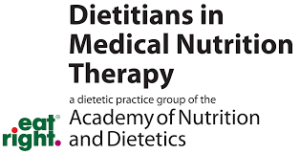Overview
A gluten-free diet is used to treat celiac disease, a genetic autoimmune condition that affects about 1% (or 1 out of every 100) of children in the U.S. Most of these children attend federal and state-supported learning programs (e.g. school, camps, etc.) on a daily basis. When individuals with celiac disease consume gluten (a protein found in wheat, barley, and rye), the immune system attacks itself and damages the nutrient-absorbing villi in the small intestine.
Why is the gluten-free diet being recommended?
The long-term effects of untreated celiac disease can be severe and may lead to nutrient deficiencies, stunted growth, osteoporosis, neurological conditions, and increased risk for cancer and other autoimmune disorders. The only treatment for celiac disease is lifelong adherence to the gluten-free diet.
There are significant physical, psychological, and social burdens that affect students who must follow a gluten-free diet. These may include, but are not limited to:
- Painful, embarrassing, and distracting symptoms
- Anxiety or fear about becoming ill
- Bullying and discrimination
- Social isolation and exclusion
- Difficulty participating in classroom activities, lessons, and celebrations involving gluten
- Difficulty focusing and learning
- Frequent absences and missed work
What conditions is the gluten-free diet used for?
- Celiac disease.
- Non-celiac gluten sensitivity (NCGS).
Getting started
A 504 plan is a federal law that requires schools to make accommodations for students with disabilities that are reasonable and let them participate in school and school-related activities. Celiac disease is considered a disability under a 504 plan.
Talk to your school about creating a 504 plan for your child. The 504 plan should address how an institution can prevent gluten exposure and cross contamination while also building an inclusive environment. Policies should be implemented to prevent social difficulties and to allow children with celiac disease to participate in any and all activities. Staff training about celiac disease and the gluten free diet should be made available to any staff interacting with the student.
Below are examples of items often addressed in a 504 plan for those with celiac disease.
- Identify school supplies and materials that contain gluten and provide substitutes for learning activities and projects for all students.
- Provide gluten-free options for all students for special events when possible OR provide a gluten-free alternative for students with celiac disease.
- Teachers should monitor students to ensure a safe environment as well as help students with celiac disease review food labels.
- Create designated spaces for gluten free foods and snacks (which parents can bring in).
- Help prevent cross contamination during snacks and meals.
- Ensure students avoid sharing or trading food.
- Implement hand washing before and after eating or using schools supplies or materials that may contain gluten.
- Food service department should have appropriate training and implement specific protocols for gluten-free food preparation.
- Food service department should offer the same or close to the same gluten-free food options (using strict methods to prevent cross-contact OR using a designated gluten-free preparation area).
- Parents may have the option to send lunch from home.
- Access to a microwave, toaster and/or refrigerator for gluten-free foods.
- Lunch monitoring for younger students.
Due to possible cross-contact with gluten, the student should have unlimited bathroom access as well as unlimited nurse access.
- Advance notification of field trips, holiday parties, birthdays, and classroom activities involving food.
- Allowing parents to provide a gluten-free option OR have school provide safe gluten-free foods for the class.
- The school may choose to implement a no food policy in which non-food items are used for all celebrations, activities and rewards.
- Avoid activities and field trips that would exclude children with celiac disease.
- Inform outside vendors, when appropriate, of gluten-free needs of children with celiac disease and/or provide the option for parents to provide alternatives.
* A parent may have to speak directly with the food service staff regarding steps to avoid cross-contact with gluten
**A 504 plan may need to be further individualized depending on certain school environments and frequent activities that may lead to gluten ingestion or cross contact
Resources
Written by

Raquela Adelsberg, MS, RD, CDN
Sadie Nagle MS, RD, LD
Meghan Donnelly, MS, RD, CDN
Reviewed by the DIGID Gluten and Wheat Disorders Workgroup © 2021

Raquela Adelsberg, MS, RD, CDN
Sadie Nagle MS, RD, LD
Meghan Donnelly, MS, RD, CDN
Reviewed by the DIGID Gluten and Wheat Disorders Workgroup © 2021


